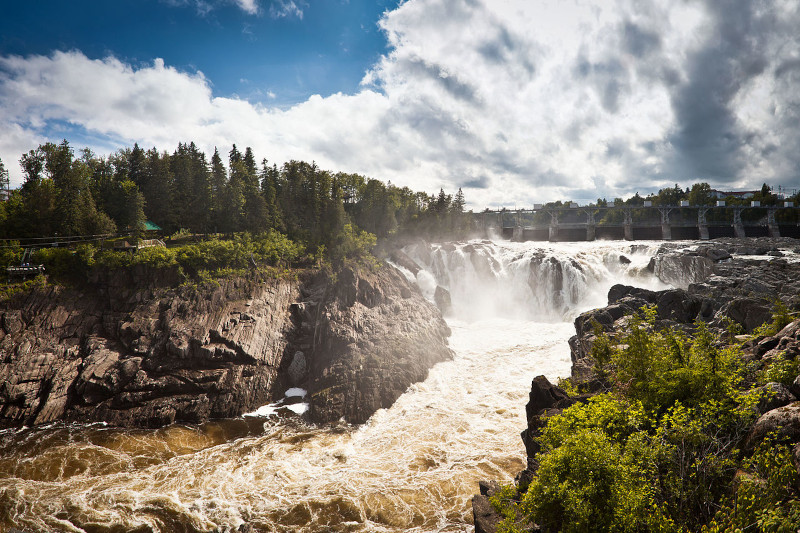Grand Falls Facts
- The fully appropriate term of Grand Falls serves as one of the common names generally applied to this visually stunning waterfall. This geological wonder also, however, goes by the equally apt other name of the Chocolate Falls, for some people.
- For the moment, it remains undetermined who among the various explorers to the area first encountered the cascade. The local Native American population, however, had understandably long known of the existence of this marvel of Nature.
- For the latter centuries of its existence, the land the marvelous cascade formed on became shared by members of the Navajo Nation. In point of fact, these proud Indigenous People still have legal control of, and maintain, the immediate region.
- In a pleasantly surprising twist, the very nature of the surrounding environment aids in its protection and preservation. The part of the region in which it sits possesses an extremely rugged terrain, limiting the number of its visitors.
- Further protecting it, access to Grand Falls remains allowed only by a special permit, and with the express knowledge and permission of the Navajo Nation officials. In fact, even experienced hikers are advised against visiting the site without local guides.
Related Articles
Grand Falls Physical Description
Spotting the truly breathtaking formation known to man as Grand Falls makes several things immediately clear. To the amazement of those who have the good fortune to visit it, this site remains incredible for not just its beauty, but for its sheer size as well.
Certainly, its sheer physical dimensions qualify it as an impressive specimen of waterfall. Although its exact width naturally varies with the amount of water flowing at any one time, this measurement averages a highly respectable 200 ft (61 m).
The overall height of the visually impressive formation, meanwhile, also never fails to impress the visitor or researcher. Given that this characteristic of the beautiful cascade measures approximately 185 ft (56.4 m), that’s not at all surprising, though.
The magnificent Grand Falls also remains renowned for yet another characteristic. That’s the fact that its waters remains almost constantly extremely muddy. This state is so strong, in fact, that it often prompts some to compare the color to chocolate, hence the other name.
Grand Falls Location, Origin, and Distinctive Characteristics
The visually stunning, and simultaneously fascinating, Grand Falls formed in a region of the globe already well known for its beauty. That’s because this wonder formed in what now constitutes the state of Arizona, in the United States, in North America.
It also formed a very long time ago. Current estimates, based on geological records, indicate that it formed roughly 150,000 years ago. In point of fact, this formation took place in a portion of the region currently given the. literally, colorful name of the Painted Desert.
At that time, the eruption of an ancient volcano formed the nearby Merriam Crater. Lava from the eruption flowed into what’s now named the Colorado River and formed a natural dam. The resulting rerouting of the river eventually created Grand Falls.
During the dry season, the flow rate reduces to a slow trickle and sometimes even ceases entirely. During the winter, snowmelt creates an almost steady flow. Sporadic torrential rains also create an enormous flow for brief periods when they occur in the region.
Features Sharing Its Region
Check out our other articles on Earth’s Many Magnificent Bees, Velvet Belly lanternshark, Bungle Bungles, Hawaiian Whie Hibiscus, Tree Kangaroo, Isabella Tiger Moth, Gila Monster

